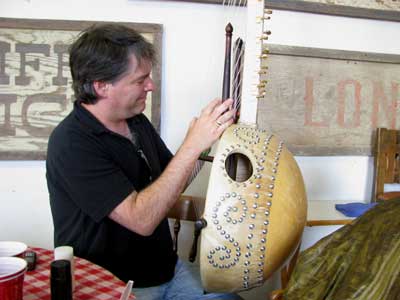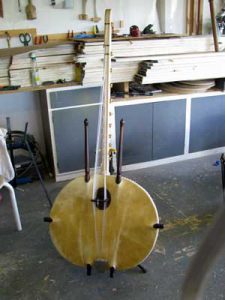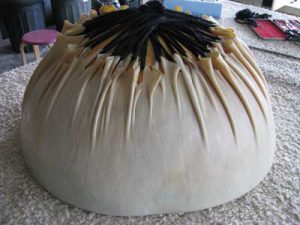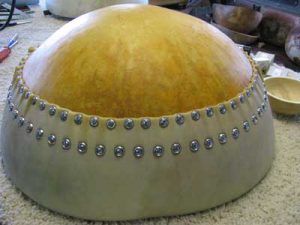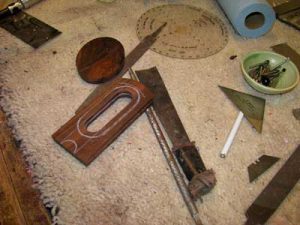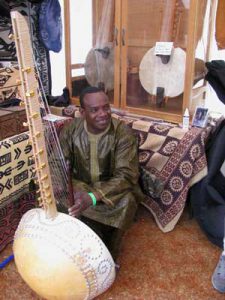By Malia Durbano
A kora is a West African stringed instrument in the family of bridge harps or harp-lutes traditionally played in Mali, Senegal, Guinea and Gambia. The first written historical reference to a kora appeared in Mali in the 14th century. Mandinka oral tradition suggests it to be in the 16th century with no scores written until the 20th century. Here’s how the koras are built at the Jaroso shop:
Step 1: The base of the kora is a large calabash or gourd which Michael Schraud brings over from Senegal. It has already been cleaned and cut in half. It is covered with wet cow or goat skin that dries and tightens to form the resonator.
Step 2: Decorative fasteners are applied. The skin is attached to the gourd with screws and washers. Other builders use upholstery tacks. The decorative fasteners are then added.
Step 3: The bridge and bridge plate are carved with some handheld power tools, finished with carving tools, chisels, files and rasps, hand sanded.
Step 4: The strings were originally twisted gut, sometimes twisted hide, later fishing line. “I use custom harp strings, from a shop in California. My koras are built to hold up to a lot of tension and pressure, so I use strings that deliver more volume and sound,” Schraud says.
To play the kora, one uses the thumb and index finger on both hands to pluck the strings in polyrhythmic patterns (using the remaining fingers to hold the vertical bars on either side of strings to secure the instrument).
Songs on a kora are a combination of improvised solo runs or phrases, called Birimintingo. They are played simultaneously with Ostinato patterns, called Kumbengo. The term Ostinato is derived from the Italian “obstinate” or ostinati. In music, it is a short melodic phrase repeated throughout a composition, sometimes slightly varied or transposed to a different pitch.
Click here to listen to kora music by Toumani Diabate and Sidiki Diabate on YouTube.

